
IBM Data Server Manager
Product scope, installation, usage examples of version 1.1.2.
IBM Data Server Manager is a free, relatively new software from IBM that aims to undertake trivial administration operations of db2 databases. The software is comming as a web application that allows database administrators to execute a variaty of tasks from a friendly cross-platform user interface. It also has monitoring capabilities. You can review an abstract description of the product in this from IBM developerWorks site.
In this post, we will describe a sample installation of the product in a linux machine (say linux container) and we will show some indicative examples of use.
Installation
The package to download for a linux installation is ibm-datasrvmgr-linux-x86_64.tgz
Lets begin cloning a sles linux template to create a new container:
~# lxc-clone sles ibmdsm
Created container ibmdsm as copy of sles
Extract the package inside the new container's file system (in this example /var/lib/lxc/ibmdsm/rootfs/opt/ibm/dsm):
~# tar xvf ibm-datasrvmgr-linux-x86_64.tgz
Connect to the container via ssh and run the setup script:
ibmdsm:~ # /opt/ibm/dsm/ibm-datasrvrmgr/setup.sh
Follow the installation steps:
- Accept the agreement
- Specify a new default administrator user ID
- Specify a password to use for the default administrator user
The server is started automaticaly:
Welcome to IBM Data Server Manager
The following settings are defined in the setup.conf configuration file:
Server settings
HTTP port number (-1 indicates that the port is disabled)
port = 11080
HTTPS port number (-1 indicates that the port is disabled)
https.port = 11081
Status port number
status.port = 11082
No repository database will be used.
Specify a new default administrator user ID to initially log in to the web console with administrator privileges. The user ID is specific to the product and is independent of operating system user IDs : admin
Specify a password to use for the default administrator user :
Re-enter the password for the default administrator user :
Do you want to continue setting up the product with this configuration? (Y/N) : Y
Saving settings...
Setup is complete.
Starting the server...
The server is started.
Summary
* Web console HTTP URL
http://ibmdsm:11080 (login: admin)
* Web console HTTPS URL
https://ibmdsm:11081 (login: admin)
Press Enter key to continue...
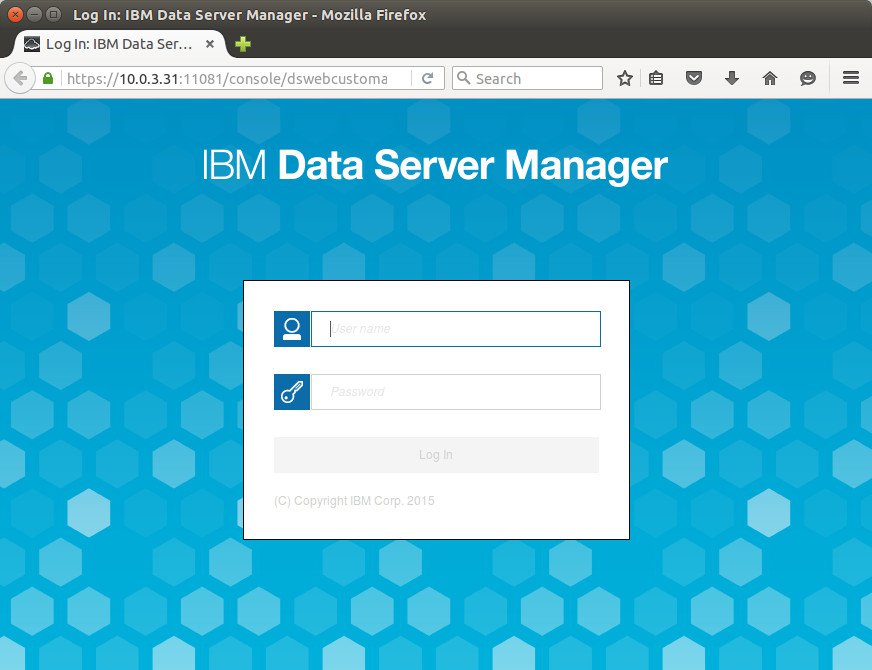
Login with your credentials.
You are in the applications homepage.
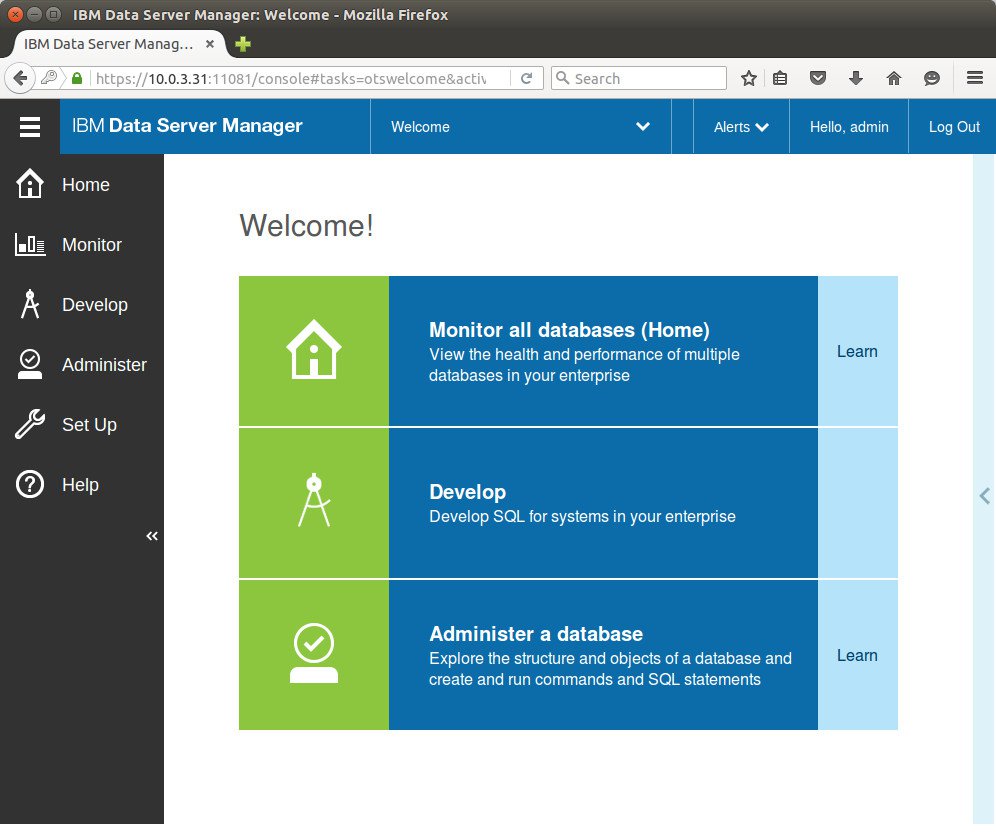
Usage examples
Lets create a connection to a test database server in order run some basic administration tasks:
Setup > Database Connections > Add a database connection
After filling in all the connection properties, you have a new database connection like this bellow:
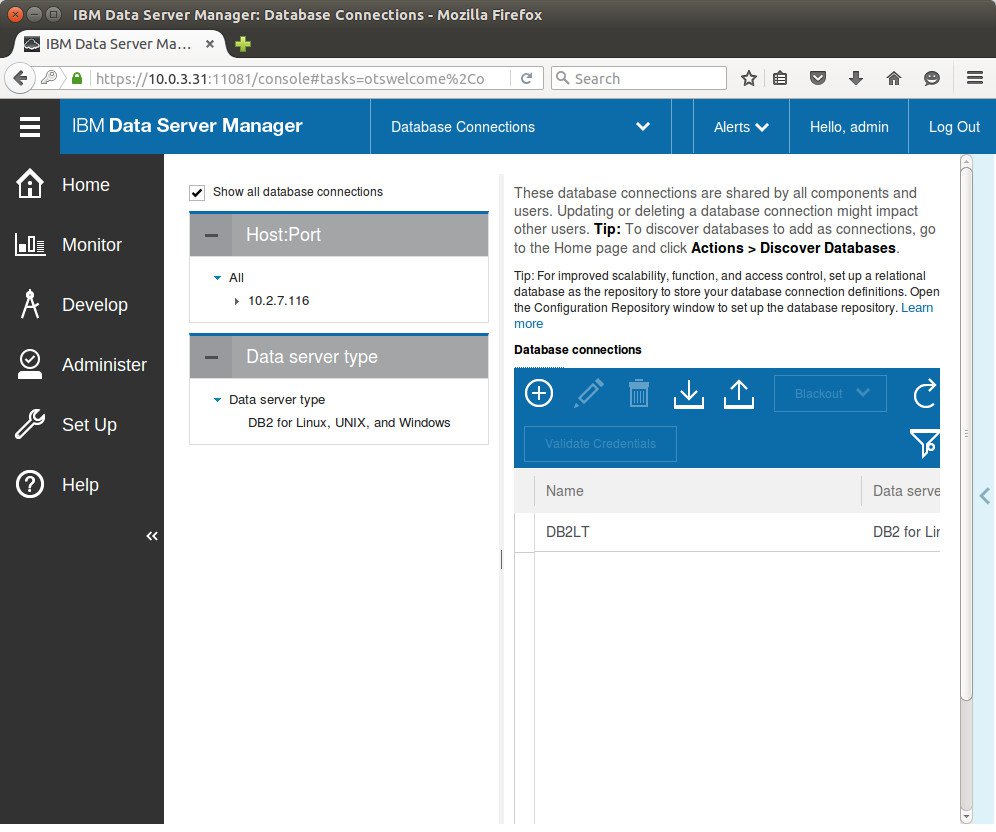
You can monitor the database just created:
Monitor > Database > Choose the database
Take a look in some situations you can monitor:
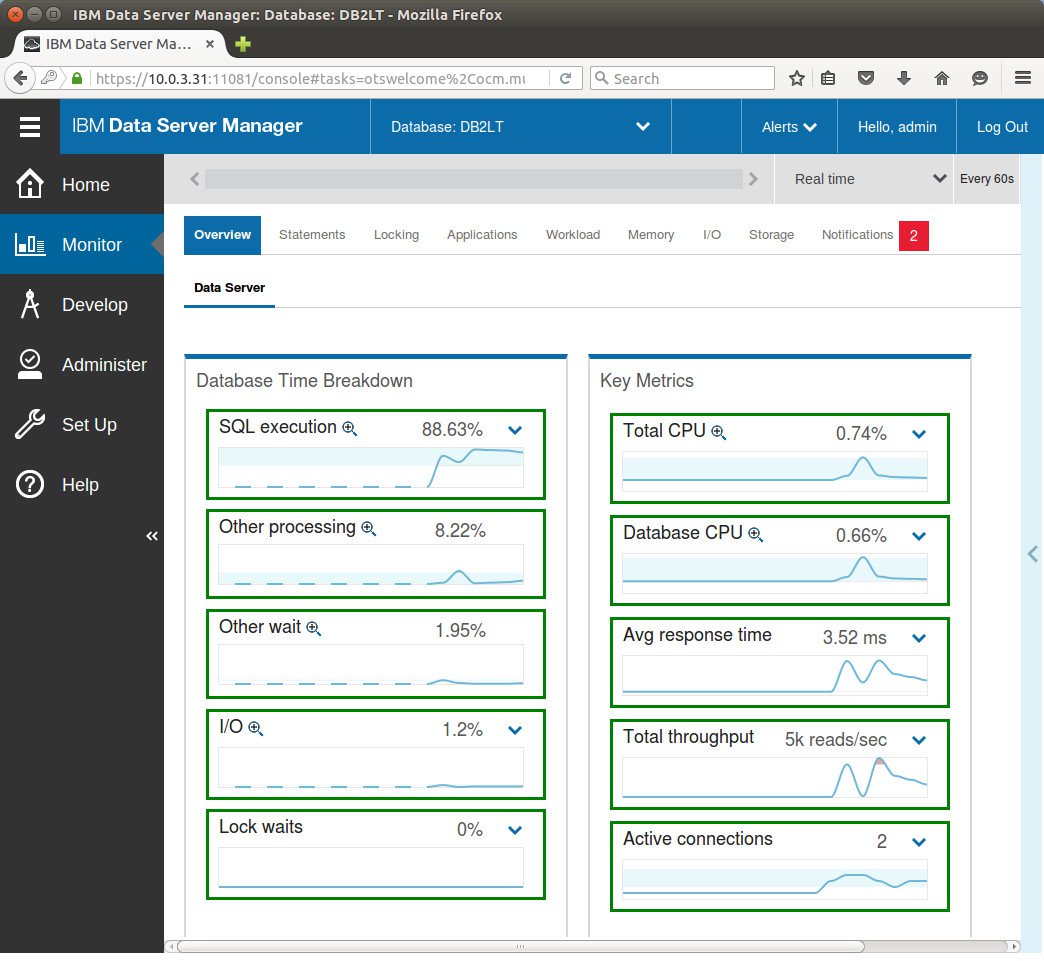
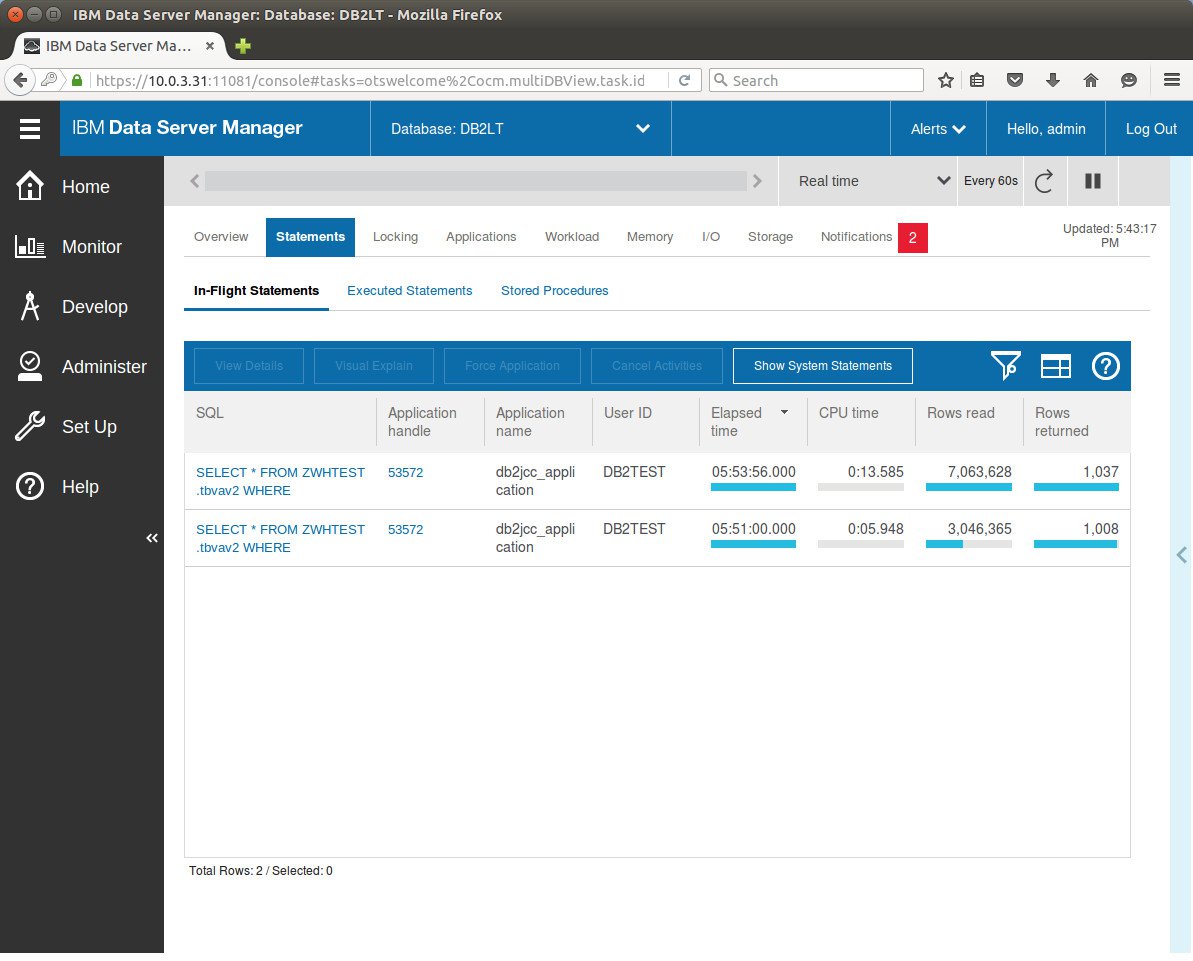
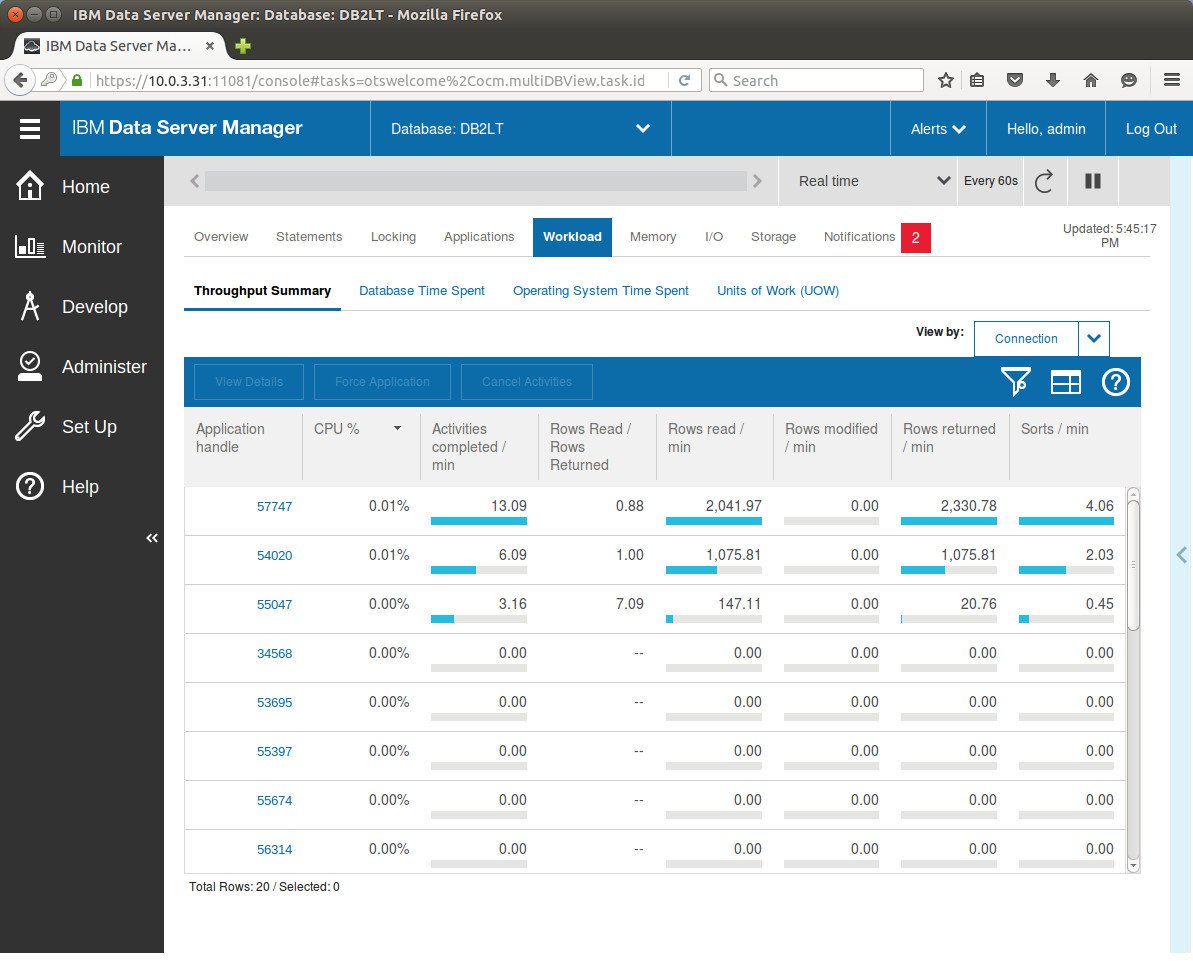
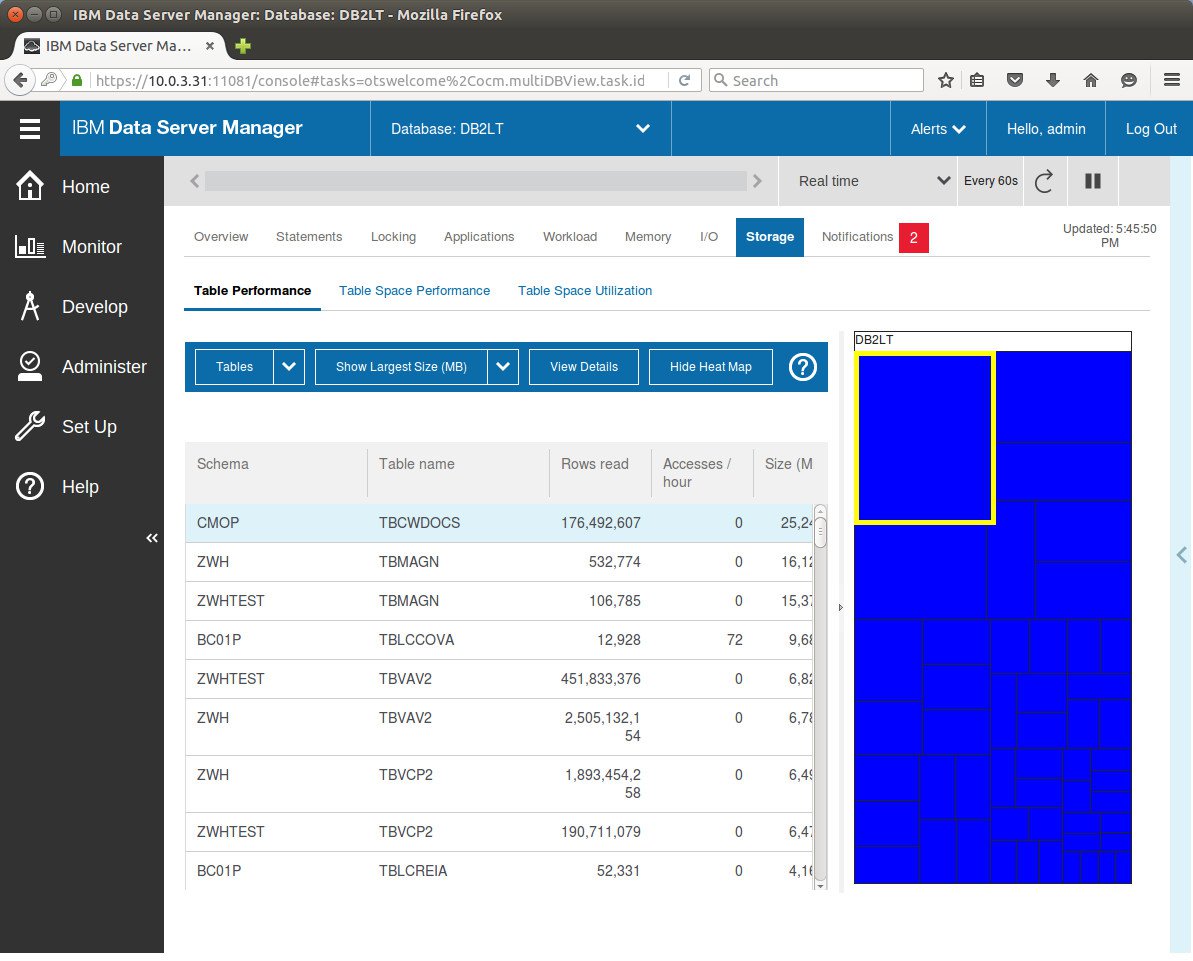
Now lets use the data server manager to extract the ddl from a table.
Follow:
Administer > Explore Databases > Provide database credentials > Select a table > Click Generate DDL button
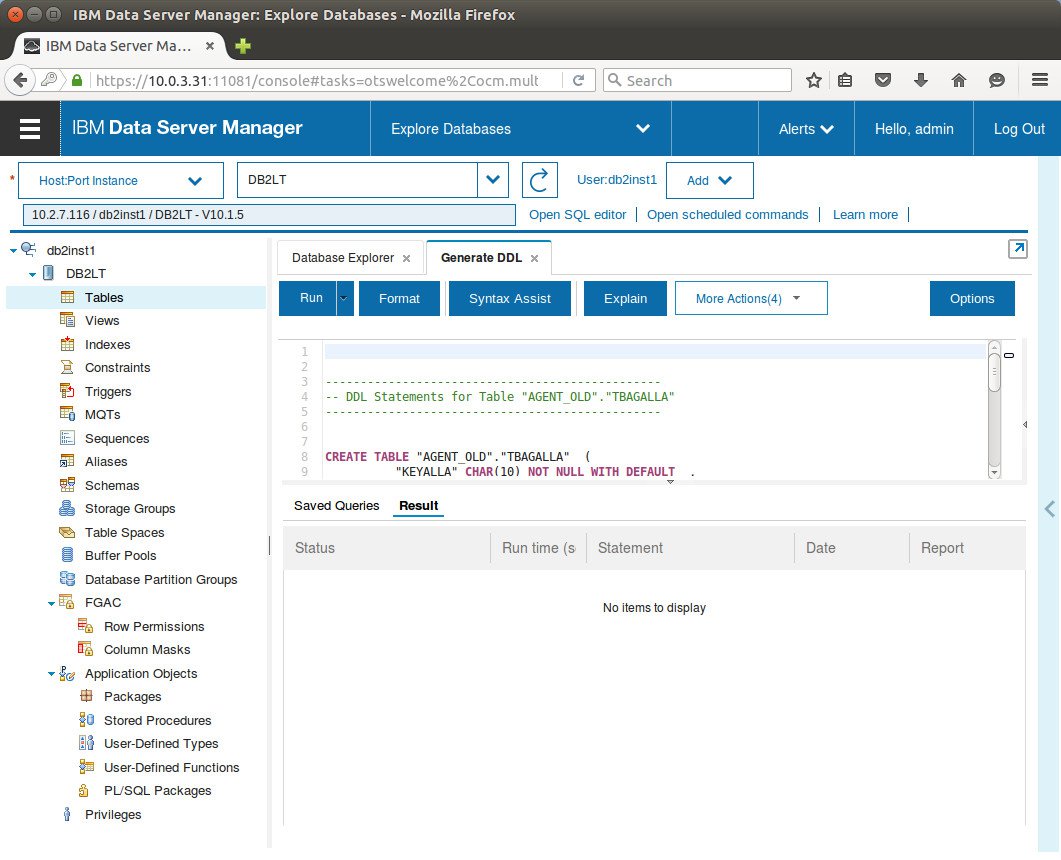
You can also do the following DB2 administration tasks:
- Activate
- Deactivate
- Backup
- Restore
- Quiesce
- Unquiesce
- Recover
- Roll Forward
- Revalidate
- Configure Logging
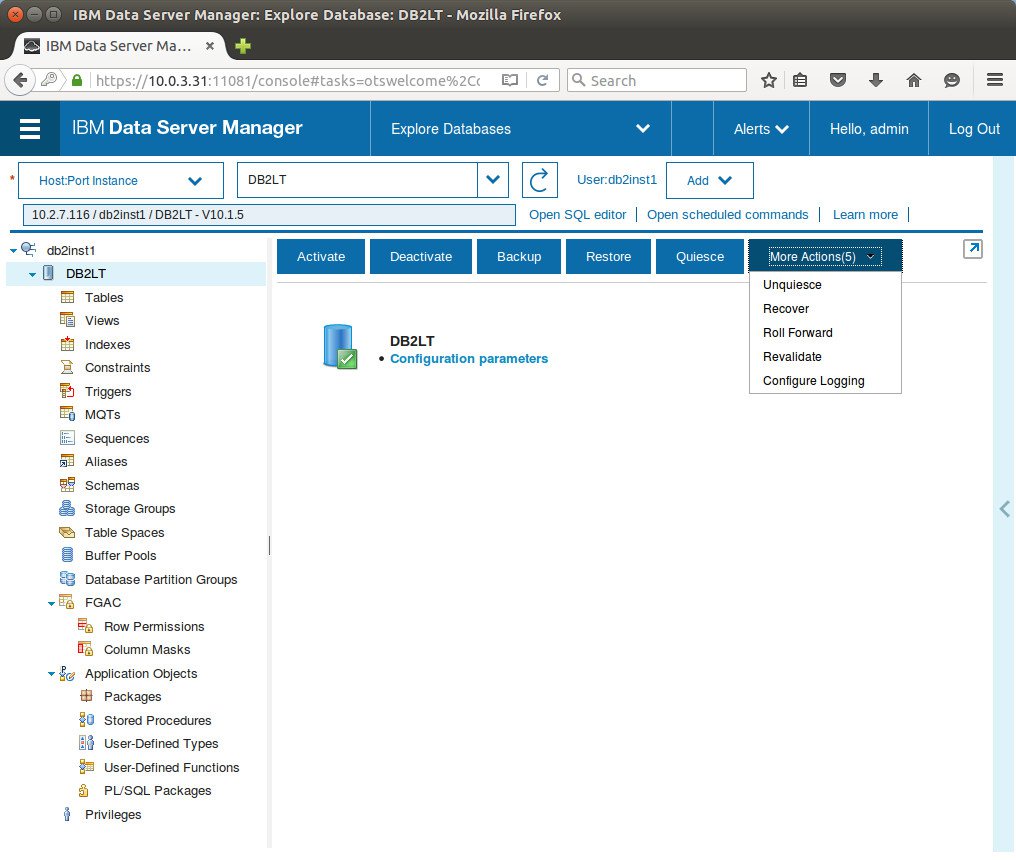
You can use the provided SQL editor (Develop > SQL editor) to write your own sql scripts and run them against the available databases:
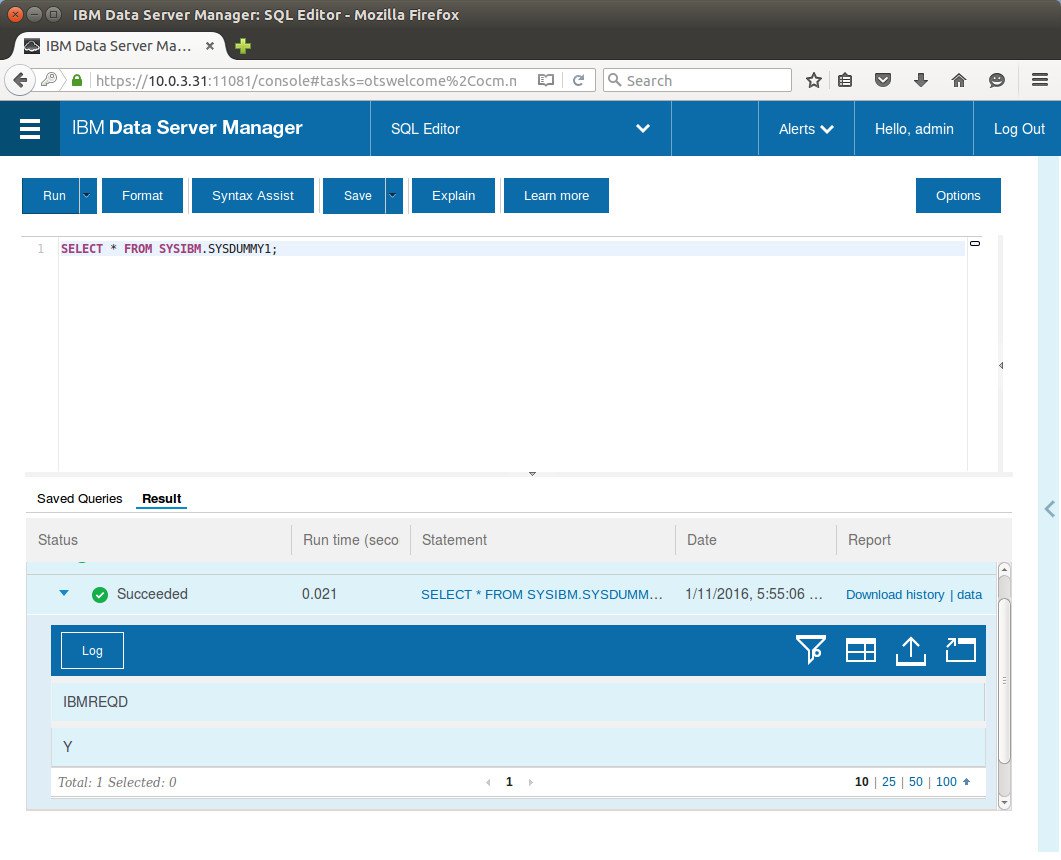
There is also a scheduler under Administer > Jobs menu form ahere you can run the job types you can see here:

You have also access to the DB2 diagnostic log throu the software (db2diag.log)
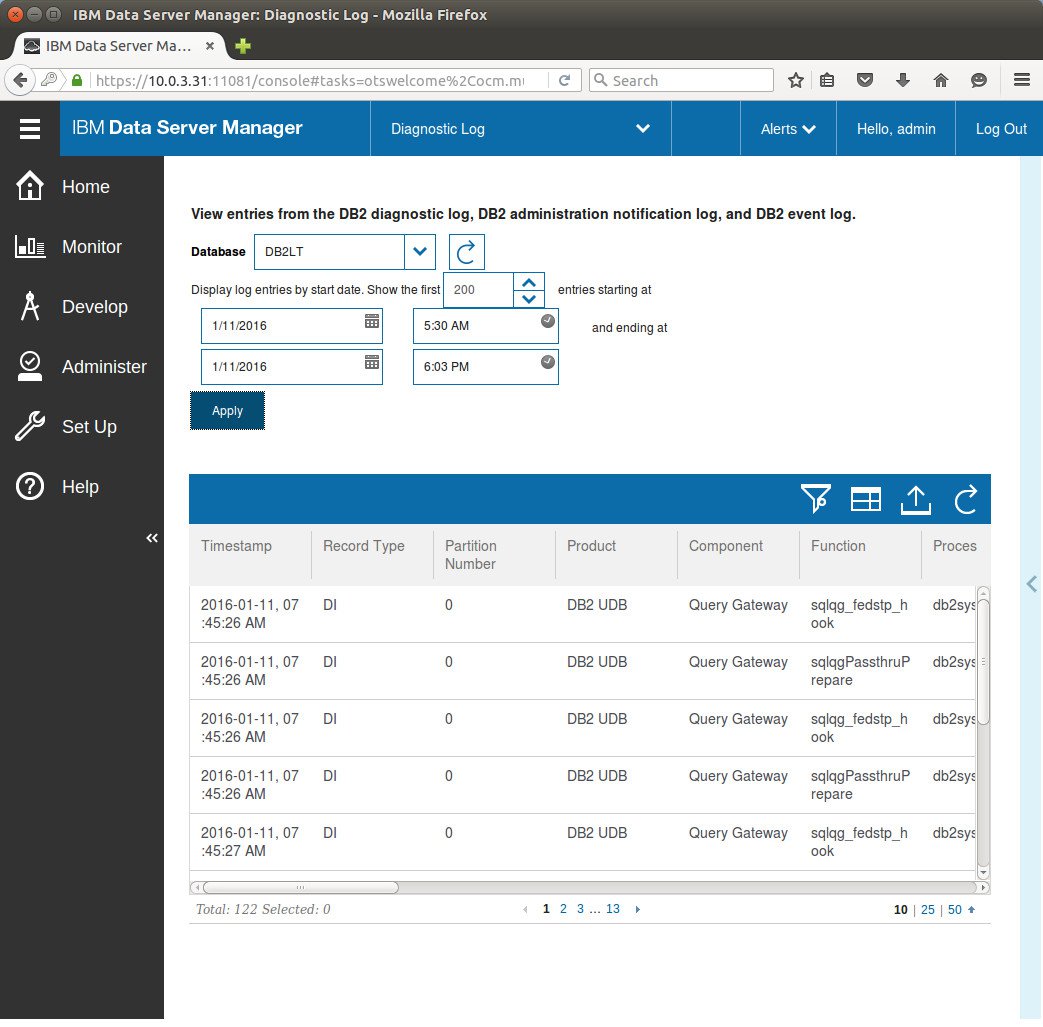
Conclusion
As you can see IBM Data Server Manager is an easy to install and to use software that provided for free by IBM (the base edition) and helps DBAs to administer the database infrastructure from a user friendly web UI. It can help to automate tasks, answer questions about performance and storage usage and get basic debug information.
- Posted by Kostas Koutsogiannopoulos · Jan. 12, 2016

